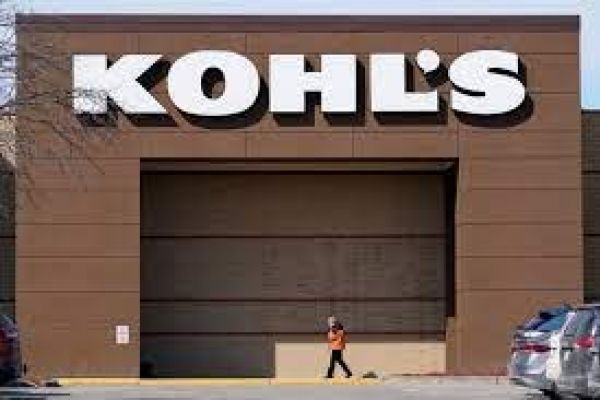Kohl’s, a major department store chain, has been at the center of speculation and rumors regarding its future. With declining sales and ongoing challenges in the retail industry, concerns have arisen about the possibility of Kohl’s going out of business. In this article, we will explore the current situation, the reasons behind store closures, and the potential impact on employees and customers.
Key Takeaways:
Page Contents
- 1 Kohl’s Financial Troubles and Challenges in the Retail Industry
- 2 Kohl’s Store Closures and Reasons Behind Them
- 3 Locations of Kohl’s Closing Stores
- 4 Impact on Employees and Customers
- 5 Financial Impact and Future Outlook
- 6 Timing of Kohl’s Store Closures
- 7 Strategic Shifts and Evolution of Kohl’s Business
- 8 Uncertain Future and Potential Scenarios
- 9 Conclusion
- Kohl’s has announced plans to close underperforming stores, raising questions about its future.
- The retail industry’s changing landscape and increased competition have contributed to Kohl’s financial troubles.
- Kohl’s is strategically closing stores to improve profitability and align operating costs.
- Employees of closed stores are expected to receive severance packages, but the closures may inconvenience some customers.
- Kohl’s is taking steps to evolve its business, focusing on e-commerce and enhancing the shopping experience.
Kohl’s Financial Troubles and Challenges in the Retail Industry
Kohl’s has encountered significant financial troubles in recent years, reflecting the evolving landscape of the retail industry and shifting consumer behaviors. The company’s current situation is shaped by declining sales and profits, primarily driven by changing shopping habits and increased competition, notably from e-commerce giants like Amazon.
The rise of online shopping and the convenience it offers has resulted in a decline in foot traffic at physical stores, adversely affecting large-format retailers such as Kohl’s. Furthermore, the COVID-19 pandemic has accelerated this shift towards digital commerce, as consumers increasingly embrace the ease and safety of shopping from home.
In response to these challenges, Kohl’s has been compelled to take strategic actions to improve its financial standing and secure its future prospects in a rapidly transforming industry. The company recognizes the need to adapt to these market dynamics and address the changing needs and expectations of its customers.
“Kohl’s has faced declining sales and profits due to changing shopping habits and increased competition, particularly from online retailers like Amazon.”
With its business status at stake, Kohl’s has been focused on implementing a range of initiatives to navigate its financial troubles and position itself for long-term success. The company has been reevaluating its store portfolio, evaluating store performance and profitability metrics to identify underperforming locations. Through selective closures, Kohl’s aims to optimize its physical footprint and align its operations with the evolving retail landscape, ultimately driving improved financial results.
To effectively compete in the digital age, Kohl’s has made efforts to enhance its online presence and expand its e-commerce capabilities. By investing in robust online platforms, optimizing its website for user experience, and offering convenient online shopping options such as buy online, pick up in-store (BOPIS), the company seeks to attract and retain customers who prefer the convenience of online retail.
Table: Kohl’s Financial Performance Comparison
| Year | Revenue (in billions) | Net Income (in millions) |
|---|---|---|
| 2018 | $19.97 | $859 |
| 2019 | $18.97 | $495 |
| 2020 | $14.31 | ($163) |
The table above demonstrates the decline in both revenue and net income for Kohl’s over the past three years, highlighting the financial pressure the company has faced. While revenue has been consistently decreasing, the net income turned negative in 2020, indicating the magnitude of the challenges Kohl’s must navigate.
Kohl’s Future Prospects and Strategic Outlook
Despite the financial difficulties and sector-wide challenges, Kohl’s remains committed to regaining its footing and securing its future success. The company is actively devising strategies to navigate the changing retail landscape and position itself as a resilient and adaptive player in the industry.
Kohl’s is focusing on optimizing its store portfolio, identifying and investing in its most profitable locations. Additionally, the company is exploring new store formats, including smaller-format stores in high-traffic areas, to better cater to consumers’ evolving preferences and shopping patterns.
Furthermore, Kohl’s is prioritizing seamless omnichannel experiences by integrating its physical and online shopping platforms. By leveraging its nationwide store footprint as distribution centers and offering innovative services like BOPIS and same-day delivery, Kohl’s aims to provide a convenient and personalized shopping experience for its customers.
While the future for Kohl’s remains uncertain, the company is determined to overcome its financial troubles and emerge stronger in the long run. By adapting to changing consumer behaviors, embracing e-commerce opportunities, and redefining its presence in the retail landscape, Kohl’s aims to secure its place and thrive in the competitive retail industry.
Kohl’s Store Closures and Reasons Behind Them
Kohl’s, one of the largest department store chains in the United States, has recently announced plans to close approximately 100 stores, which accounts for around 10% of its current footprint. This decision comes as the company aims to improve its financial performance by strategically addressing underperforming locations.
The identified stores for closure are those experiencing declining sales, low customer traffic, and high operating costs. By closing these stores, Kohl’s aims to align its operating costs with the reduced demand in these areas, ultimately improving its overall profitability.
Operating in an increasingly competitive retail market, the company recognizes the need to adapt to changing consumer preferences and shopping habits. The rise of e-commerce and the resulting decrease in foot traffic at physical stores has presented challenges for large-format retailers, including Kohl’s.
By analyzing the financial performance of its stores, Kohl’s can identify those that are no longer meeting their sales targets or contributing positively to the company’s bottom line. The decision to close these stores allows Kohl’s to consolidate resources and focus on its most profitable locations, ensuring a sustainable and profitable future.
“The key to success in the ever-evolving retail industry is to strategically manage costs and adapt to changing consumer behaviors,” says Karen Johnson, a retail analyst at Retail Insights. “Kohl’s decision to close underperforming stores is a proactive move that demonstrates their commitment to improving financial performance and staying competitive.”
List of Factors Driving Store Closures:
- Declining sales
- Low customer traffic
- High operating costs
By considering these factors, Kohl’s can effectively streamline its operations and focus on driving growth in key markets. The store closures aim to optimize the company’s store footprint, ensuring that resources are directed towards locations with the highest potential for success.
Kohl’s Store Closures by Region
| Region | Number of Store Closures |
|---|---|
| Midwest | 30 |
| Northeast | 25 |
| South | 20 |
| West | 25 |
Please note that while the table above provides a general overview of the distribution of store closures, Kohl’s has not released a comprehensive list of specific locations at this time. The closures are expected to focus on stores in areas experiencing population declines, high retail saturation, and proximity to other Kohl’s locations. States like Ohio, Florida, New York, Pennsylvania, Michigan, Wisconsin, and Indiana are anticipated to be significantly affected by the store closures.
Locations of Kohl’s Closing Stores
While Kohl’s has not released a full list of locations set to close, the company has provided some high-level details on its closure plans. The store closures will primarily target underperforming locations in rural and suburban areas that are experiencing population declines. Additionally, closures may focus on regions with high retail saturation and proximity to other Kohl’s locations.
States like Ohio, Florida, New York, Pennsylvania, Michigan, Wisconsin, and Indiana are expected to see a significant number of store closures.
Most closures will likely target underperforming stores in rural and suburban areas experiencing population declines. Closures may also focus on regions with high retail saturation and proximity to other Kohl’s locations.
This strategic approach allows Kohl’s to optimize its store footprint and allocate resources where they are most needed, ensuring the long-term viability and profitability of the company.
The specific locations impacted by the store closures have not been publicly disclosed by Kohl’s at this time. However, customers and employees in affected areas will be provided with updated information and support as the closure plans progress.
Notable States for Kohl’s Store Closures
Based on the information released by Kohl’s, the following states are anticipated to experience a larger number of store closures:
- Ohio
- Florida
- New York
- Pennsylvania
- Michigan
- Wisconsin
- Indiana
While these states may see more closures, it’s important to note that other regions and individual store locations may also be impacted as Kohl’s looks to reshape its store portfolio.
Impact on Employees and Customers
Kohl’s store closures will have significant repercussions for both employees and customers. While specific plans for affected employees have not yet been announced by the company, it is expected that Kohl’s will provide severance packages and transition support to help them navigate through this challenging period. This will assist impacted staff members in transitioning to new job opportunities and ensuring financial stability during the transition.
The closures will also impact customers, particularly those who rely on nearby Kohl’s locations for their shopping needs. The reduction in store availability may inconvenience some customers, affecting their convenience and accessibility to Kohl’s products and services. However, due to Kohl’s large footprint and the remaining open locations spread across the country, the majority of customers will still have alternate stores to visit.
The Employee Perspective
Losing a job due to store closures can be a difficult experience for employees. Many individuals rely on their employment at Kohl’s to support themselves and their families. The announcement of store closures can lead to feelings of uncertainty and anxiety about the future. However, Kohl’s commitment to providing severance packages and transition support demonstrates a level of care and concern for their employees.
“I have been working at Kohl’s for five years, and it’s distressing to hear about the store closures. I am concerned about my employment and financial stability. However, knowing that the company will offer severance packages and support during this transition provides some reassurance,” said Sarah, a current Kohl’s employee.
“Kohl’s has always prioritized its employees, and I trust that they will take care of us even during this difficult time. I am hopeful that I will be able to find another job with the support and resources they have promised,”
The Customer Perspective
For loyal Kohl’s customers, the store closures may result in changes to their shopping routines. Customers who previously enjoyed the convenience of shopping at their local Kohl’s store may now need to travel further to access the same products and services. This may cause some inconvenience, especially for customers who prefer shopping in physical stores rather than online.
“I have always appreciated the convenience of having a Kohl’s store just a few minutes away from my home. With the store closures, I will need to put in more effort to visit a Kohl’s location,” expressed Karen, an avid Kohl’s shopper.
“While it may be inconvenient, I understand that businesses need to make strategic decisions to stay competitive. I will continue to support Kohl’s by shopping at their remaining locations, as they have always provided quality products and great deals.”
Overall Outlook
While the store closures will undoubtedly have an impact on employees and customers, Kohl’s commitment to supporting their employees through severance packages and transition support demonstrates their dedication to their workforce. Customers may face minor inconveniences in terms of reduced accessibility, but the company’s extensive store network ensures that the majority of customers still have options for shopping at alternate locations. By managing the consequences of store closures effectively, Kohl’s aims to emerge stronger and more adaptable in the evolving retail landscape.
Financial Impact and Future Outlook
Kohl’s is facing significant financial pressures due to its ongoing challenges in the retail industry. The store closures will incur near-term costs for the company, including expenses related to lease buyouts, severance packages, and inventory markdowns. However, Kohl’s believes that these short-term costs are necessary to achieve long-term profitability.
The company’s focus on rightsizing its footprint by closing underperforming stores is expected to result in significant improvements in financial performance. By aligning its operating costs with reduced demand, Kohl’s aims to improve overall profitability and ensure sustainable growth.
While the future outlook for Kohl’s remains uncertain, the company is taking strategic steps to evolve its business and adapt to the changing retail landscape. One such strategy is the focus on the most profitable stores, which will help optimize resource allocation and maximize revenue generation.
In addition, Kohl’s is expanding its e-commerce offerings to cater to the growing trend of online shopping. By investing in a robust online platform, the company aims to capture a larger share of the digital market and leverage its brand strength.
Furthermore, Kohl’s is exploring opportunities in the small-format store segment. These smaller stores, strategically located in high-traffic areas, allow Kohl’s to reach customers who prefer convenience and ease of access. This expansion into new formats aligns with the company’s goal of diversifying its store portfolio and capturing additional market share.
Overall, despite the current challenges and financial troubles, Kohl’s is actively working towards a brighter future. By implementing strategic initiatives and adapting to the evolving retail landscape, the company aims to strengthen its financial health, solidify its market position, and ensure long-term success.
Key Takeaways:
- Kohl’s is incurring near-term costs due to store closures, including lease buyouts, severance packages, and inventory markdowns.
- The company believes that the potential profitability improvements from these store closures will outweigh the short-term costs.
- Kohl’s is focusing on its most profitable stores, expanding its e-commerce offerings, and exploring new small-format stores to improve its financial outlook.
- The future outlook for Kohl’s remains uncertain, but the company is actively taking steps to evolve its business and adapt to the changing retail landscape.
Timing of Kohl’s Store Closures
The bulk of the store closures are expected to happen in 2023 and 2024. Kohl’s plans to manage the pace of closures to minimize disruption to affected branches and employees. The closures will likely take place after inventory sell-offs over a period of 2-6 weeks.
It’s important for Kohl’s to carefully strategize the timing of these closures to ensure a smooth transition and minimize any negative impact on employees and customers. By staggering the closures over the course of two years, the company can effectively manage the process and make necessary adjustments along the way.
Strategic Shifts and Evolution of Kohl’s Business
In order to ensure long-term viability and adapt to the changing retail landscape, Kohl’s is implementing strategic shifts and focusing on key areas of improvement. By refining its merchandising and inventory strategies, expanding its e-commerce offerings, and piloting new small-format stores, the company aims to enhance its business and provide a seamless shopping experience for customers.
Refining Merchandising and Inventory Strategies: Kohl’s is strategically analyzing its product offerings and adjusting its inventory to focus on items that resonate with customers. By carefully curating its merchandise selection, the company aims to offer a compelling and relevant assortment that meets the evolving needs and preferences of shoppers.
Expanding E-commerce Offerings: Recognizing the growing importance of online shopping, Kohl’s is investing in its e-commerce capabilities. The company is enhancing its website and mobile app, making it easier for customers to navigate, search for products, and complete purchases online. By providing a seamless and user-friendly digital shopping experience, Kohl’s aims to cater to the needs of its tech-savvy customers.
Piloting New Small-Format Stores: In addition to its traditional large-format stores, Kohl’s is experimenting with smaller store formats in high-traffic locations. These new stores offer a more localized shopping experience and allow the company to penetrate markets where larger stores might not be feasible. By strategically expanding its physical presence, Kohl’s aims to reach a wider customer base and increase convenience for shoppers.
Enhancing Omnichannel Capabilities: Kohl’s is focused on integrating its online and offline channels to create a seamless shopping journey for customers. The company is investing in technologies and initiatives that enable features such as buy online, pick up in-store (BOPIS), and curbside pickup. By providing multiple options for customers to interact with the brand and make purchases, Kohl’s aims to deliver a convenient and personalized shopping experience.
Through these strategic shifts and business evolutions, Kohl’s is positioning itself to thrive in an increasingly competitive retail landscape. By staying agile, customer-focused, and adaptable, the company aims to strengthen its business status, drive growth, and remain a trusted destination for shoppers.
Uncertain Future and Potential Scenarios
Kohl’s finds itself at a crossroads as it grapples with store closures and the formidable challenges of the retail industry. In response to these obstacles, the company is actively taking measures to adapt and enhance its financial performance. However, industry analysts have raised apprehensions and speculated about potential scenarios that could influence the company’s future trajectory, including the prospects of bankruptcy or acquisition. Despite these uncertainties, Kohl’s executives maintain an unwavering confidence in the company’s ability to evolve and capitalize on its brand recognition and expansive nationwide store footprint, positioning itself for success in the ever-changing retail landscape.
“While the path ahead may be ambiguous, Kohl’s possesses the resolve and strategic vision to navigate these turbulent waters and emerge stronger than ever before. We remain committed to leveraging our esteemed brand, extensive physical presence, and customer-centric approach to drive growth and profitability in the face of formidable competition and shifting consumer preferences.”
– Kohl’s Executive Statement
Kohl’s recognizes the imperative need to adapt and evolve within the retail landscape’s ever-changing dynamics. By capitalizing on its nationwide presence and brand recognition, the company is actively exploring diverse strategies to safeguard its future prospects.
Investment in E-commerce and Omnichannel Capabilities
Understanding the pivotal role of e-commerce in modern retail, Kohl’s is investing heavily in expanding its online presence. Through continuous enhancements to its e-commerce platform, the company aims to provide customers with a seamless and convenient shopping experience across multiple digital touchpoints. By embracing omnichannel capabilities, Kohl’s strives to bridge the gap between its physical and digital channels, catering to the evolving shopping preferences of its diverse customer base.
Piloting New Small-Format Stores
Kohl’s recognizes the value of capturing high-traffic locations and catering to local consumer needs. To this end, the company is piloting new small-format stores that offer customers a curated selection of merchandise tailored to specific markets. This strategic approach enables Kohl’s to establish a strong presence in areas with a high population density and reinforces its commitment to meeting the unique demands of local communities.
Refining Merchandising and Inventory Strategies
Kohl’s understands the significance of aligning its product offerings with evolving consumer preferences. The company is refining its merchandising and inventory strategies to curate a compelling assortment of products that resonate with its target market. By carefully analyzing customer insights, market trends, and competitor activities, Kohl’s aims to optimize its product mix and deliver a curated shopping experience that meets the evolving needs and desires of its customers.
Strategic Store Portfolio Management
With an aim to maximize profitability and operational efficiency, Kohl’s is meticulously managing its store portfolio. The company is directing its focus towards its most profitable stores, ensuring that they receive ample resources, support, and strategic investments to thrive and drive sustainable growth. This strategic store portfolio management approach enables Kohl’s to efficiently allocate its resources and prioritize locations that demonstrate the most potential for success.
Continued Adaptation and Evolution
Undeniably, the retail landscape remains intensely competitive and fraught with challenges. However, Kohl’s understands the dynamism of the industry and the importance of continual adaptation. By remaining agile, receptive to consumer demands, and proactive in identifying new growth opportunities, Kohl’s is confident in its ability to craft a resilient future and solidify its position as a leading retailer.
Conclusion
As Kohl’s strategically manages store closures and invests in e-commerce, the company aims to strengthen its financial position and remain a relevant player in the retail industry. By focusing on enhancing the customer experience, Kohl’s will adapt to changing consumer trends, giving them increased opportunities for success.
The future prospects of Kohl’s greatly depend on the company’s ability to navigate the challenges of an ever-evolving market. Through its commitment to maximizing profitability and leveraging its nationwide store footprint, Kohl’s is positioning itself for growth and longevity.
By aligning its business strategies with shifting consumer preferences and expanding its e-commerce presence, Kohl’s is not just surviving, but thriving. With a focus on innovation and adapting to the changing retail landscape, Kohl’s is well-positioned for a successful future.
Also Read: Jonathan Groff, Who Is Out Gay, Discusses A Relationship Gone Wrong





